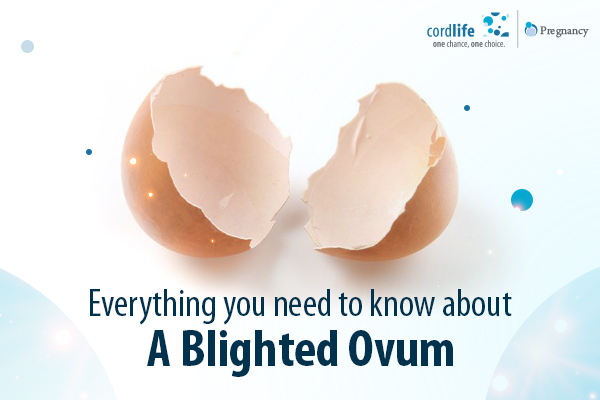Table of Contents
In a normal pregnancy, an egg fertilised by a sperm starts dividing to form an embryo eventually. However, sometimes the fertilised egg doesn’t become an embryo, or an embryo stops growing soon after implantation. Despite there being no baby, the placenta and the embryonic sac form. This condition is called a blighted ovum or anembryonic pregnancy, which eventually leads to miscarriage. Because the placenta is formed, it starts producing hCG, which is why you can expect a positive pregnancy test. In this article, you will find out everything you need to know about this condition.
What Causes a Blighted Ovum?
At the outset, you need to understand that this isn’t caused by anything you did or didn’t do. Your partner isn’t to blame either. While the cause of blighted ovum isn’t fully known, it’s attributed to chromosomal abnormalities. This means that the fertilised egg either had an additional chromosome or had one missing.
Are There any Symptoms to Indicate a Blighted Ovum?
In most cases, a blighted ovum occurs so early in the pregnancy that most women don’t even realise that they are pregnant. It may just seem like you have a heavier menstrual cycle. On the flip side, a blighted ovum may be the reason behind getting a negative pregnancy result after a positive one.
Hence, to begin with, your symptoms will be pregnancy symptoms like sore breasts, morning sickness, a missed period, and even a positive pregnancy test. However, when the fertilised egg doesn’t develop into an embryo, your hCG levels drop, and your pregnancy symptoms go away too. Instead, you may feel the following:
Bleeding
While bleeding is normal during early pregnancy, heavy bleeding could indicate a miscarriage. If you find the bleeding similar to your period, then visit your doctor.
Cramps
Again, while cramping can happen during pregnancy, watch out for severe cramps, which could indicate a miscarriage.
hCG Levels
If you have a blighted ovum, a blood test conducted at about 6-8 weeks of pregnancy will show lower-than-usual hCG levels.
Some of the above symptoms may also indicate an ectopic pregnancy, so an ultrasound is the only way to confirm a blighted ovum. If that’s the case, the test will show a smaller-than-expected gestational sac without an embryo.
How Can a Blighted Ovum be Treated?
If your doctor detects a blighted ovum, you can do one of three things:
1) wait for the symptoms of a miscarriage to naturally occur
2) take medication to force a miscarriage
3) a surgical procedure to remove the placenta tissue from the uterus
Your doctor will be the best person to advise the course of action, given your pregnancy and medical history, together with your emotional and mental state. If you are considering medication or surgery, be sure to discuss any and all side effects with your doctor to know what you’re getting into.
Will a Blighted Ovum Affect Any Future Pregnancies?
The good news is that most women who have a blighted ovum will have normal and healthy pregnancies in the future. To discuss how long you should wait with your doctor. It’s also important to give yourself and your body some time to recover before trying to get pregnant again. Since you have undergone a blighted ovum, your doctor may also discuss testing egg and sperm quality or even a genetic analysis.
There was never a baby with a blighted ovum, but despite this, it can be an emotionally challenging time for you and your partner. Reach out to each other and other loved ones for support to get through this.
